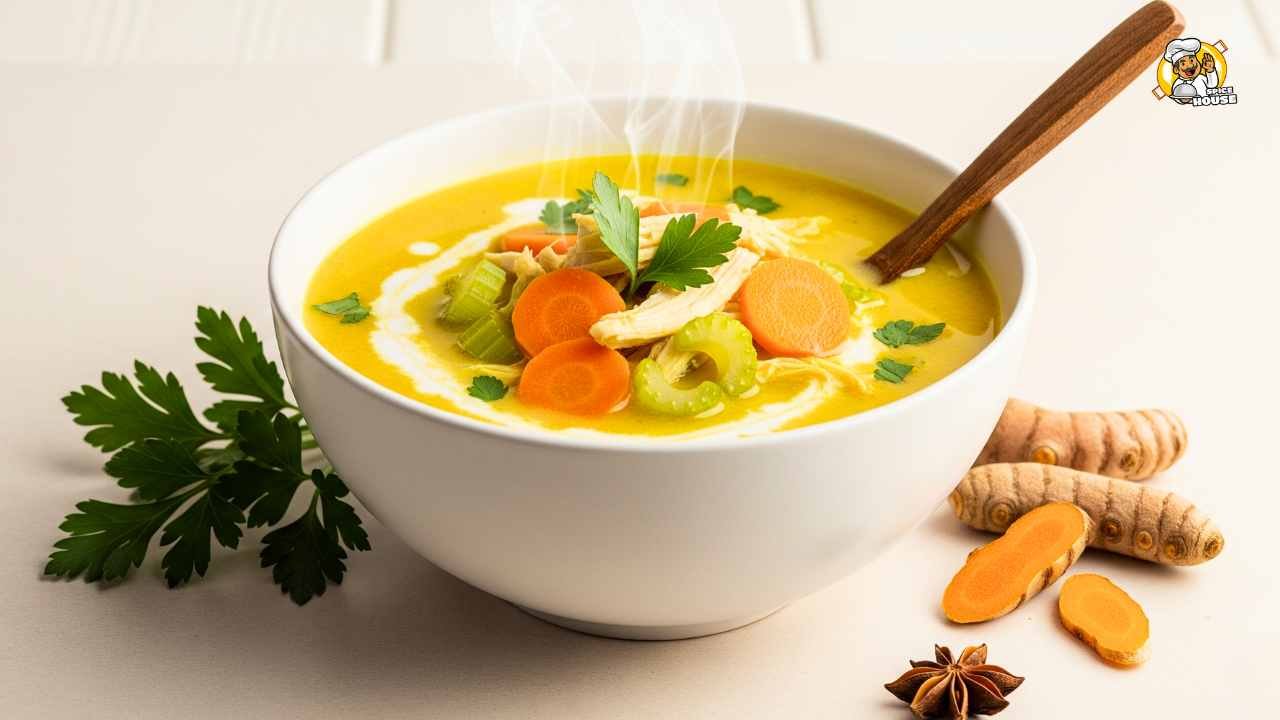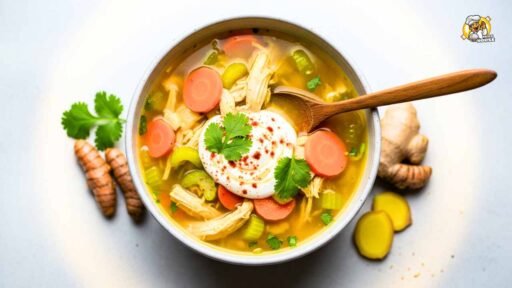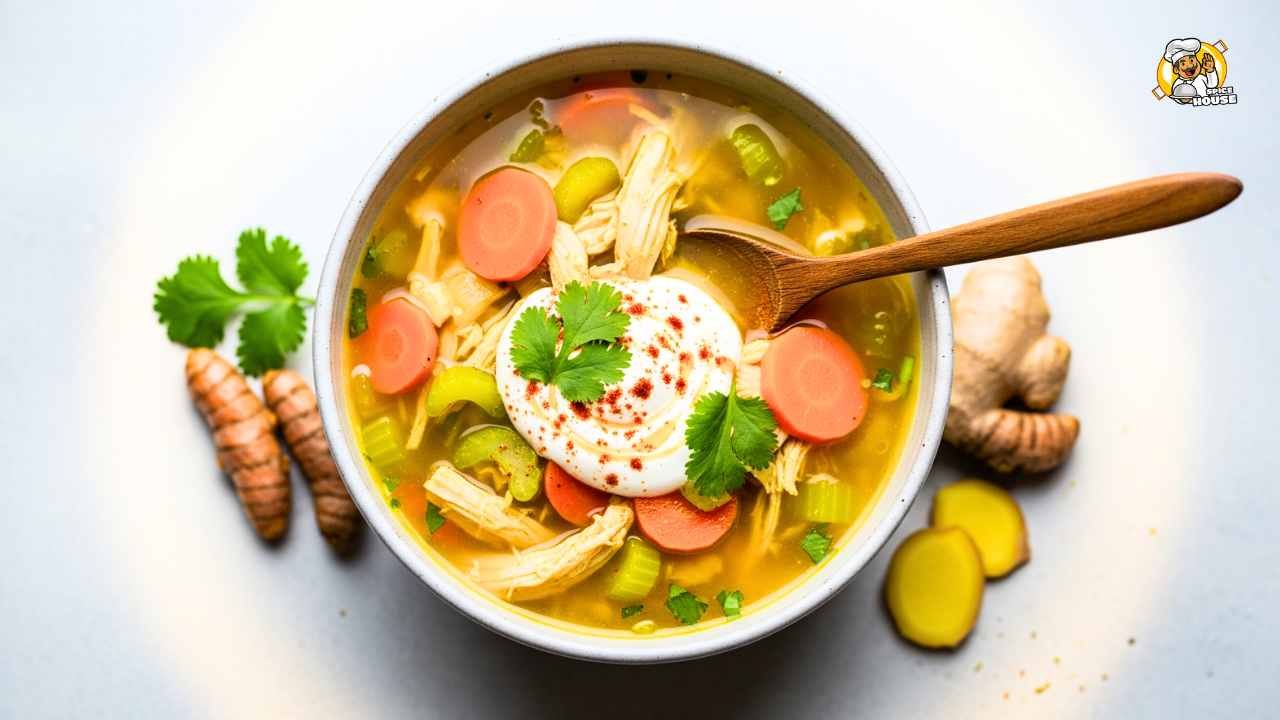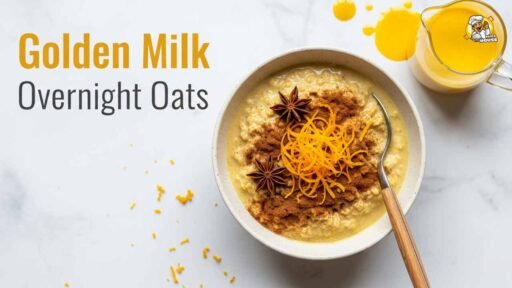Shares of McCormick & Company jumped about 4% in premarket trading after the flavor giant beat quarterly profit estimates and reaffirmed guidance, a signal that resilient at-home cooking and premium spices still have momentum even as tariffs and price sensitivity loom. Here’s the thing: when a spice-maker nudges volumes higher while protecting margins, it tells a story about what people actually cook on Tuesday nights—simple, functional meals like an anti-inflammatory turmeric chicken soup that promises comfort and wellness without the two-hour prep.
The trend is clear and a little messy: consumers are still cooking at home, but they’re looking for faster wins, while wellness cues, such as turmeric, ginger, lemon, nudge basket choices at checkout. It affects investors making calls on pantry categories, retail employees who see turmeric and broth fly off shelves, and home cooks who want a restorative bowl that actually fits in 45 minutes, no corporate spin, just dinner.
The Data
-
According to a 2024–2025 scientific review of curcumin RCT meta-analyses, curcumin intake was associated with reductions in CRP in 7/10 meta-analyses, IL-6 in 5/8, and TNF-α in 6/9—consistent with anti-inflammatory mechanisms that consumers increasingly recognize in turmeric-forward recipes. This aligns with clinical meta-analytic evidence in inflammatory conditions like ulcerative colitis, where curcumin demonstrated significant benefits in remission and clinical response across placebo-controlled trials.
-
Time remains the weeknight choke point: less than 40% of surveyed UK consumers reported cooking from scratch up to five days a week, down from more than 50% in 2022, even as two-thirds spend an hour or more when they do cook—so dishes must feel “worth it.” That trade-off—fewer scratch nights, longer cook times when they happen—helps explain why one-pot, flavor-dense soups with functional spices keep trending.
-
McCormick reported a 1% rise in net sales to $1.66 billion and a 1.3% increase in quarterly volumes, beating profit estimates and underscoring durable demand for at-home flavor even as price increases slowed to 0.3%. For investors, that mix—resilient volumes, premium exploration, cost controls—maps neatly onto a pantry anchored by a pot of turmeric chicken soup that punches above its weight on wellness and taste.
Anti-Inflammatory Turmeric Chicken Soup: Weeknight Cure (Step-by-Step Guide)

Step 1: Build a clean, aromatic base (8–10 minutes)
Start with a heavy pot over medium heat and add olive oil; soften onion, celery, and carrot with a pinch of salt until glossy and fragrant, because that sauté is the runway where flavor takes off without burning. Layer minced garlic and fresh ginger next, letting the kitchen smell like dinner in 60 seconds—if it smells slightly sweet and spicy, the aromatics are ready.
Here’s the thing: weeknights don’t need heroic knife work; a quick chop and a warm pan are most of the lift, which is why one-pot soups win. Several trusted home-cooking sources start similarly—oil, aromatics, then liquid—because the Maillard notes in the base help a lean broth taste slow-cooked. For a coconut-kissed variant, a splash of coconut milk can soften turmeric’s earthiness without pushing the soup into heavy territory.
Keep the heat moderate; you want shine and steam, not scorched edges that turn bitter, especially before the spices bloom.
Step 2: Bloom anti-inflammatory spices (45–60 seconds)
Add ground turmeric, a little coriander, and black pepper to the hot fat and aromatics, stirring until the spices sizzle and gloss the vegetables; this “bloom” unlocks fat-soluble aromatics and spreads their flavor edge-to-edge. Black pepper matters—piperine may enhance curcumin’s bioavailability—while coriander keeps the profile bright and lemon-friendly.
Keep the oil shimmering, not smoking; blooming works best around the moment a warm, nutty perfume hits the air, then you move on before bitterness shows up. If using fresh turmeric root, grate it and add it with ginger to keep the flavor vibrant; if using powder, bloom gently to dodge chalky notes. This smells like a smart hedge against blandness, and it’s a technique embedded across spice-forward cuisines for a reason.
Once the spices are fragrant, deglaze with a splash of broth to pick up fond and keep the pot friendly before the full simmer.
Step 3: Simmer broth and chicken for depth (20–25 minutes)
Pour in quality chicken broth, then add boneless chicken breasts or thighs and bring to a gentle simmer—no hard boil, just tiny bubbles, so proteins stay tender. Shred the chicken when it’s cooked through and return it to the pot, a move many reliable recipes use to keep meat juicy and strands silky. Monitor doneness with an instant-read thermometer and aim for an internal temperature of 165°F for safety, because visual cues can mislead.
If leaning toward a heartier bowl, stir in thinly sliced carrots or noodles to cook directly in the broth; timing is flexible, but tenderness beats clock-watching. For a nutrition-first route, bone broth brings collagen-rich body while remaining weeknight-fast in a Dutch oven. Skim any foam for clarity, then taste the broth for salt, then acid, and resist the urge to over-extract the chicken, since simmering it to exhaustion trades tenderness for dryness.
Step 4: Finish with brightness and greens (3–5 minutes)
Turn off the aggressive simmer and fold in fresh spinach or kale until just wilted; the color should stay vivid because limp greens signal overcooking. Now add lemon juice and zest for a fast, clean lift that wakes turmeric and ginger, a pairing many home cooks repeat because it tastes like relief. Dill or parsley at the end adds an herbal snap—think of it as a soft reset for the palate that keeps spoonfuls interesting to the last bite.
Taste again and season: more lemon for zing, a pinch more salt for roundness, or a crack of pepper to play nicely with turmeric’s earthy backbone. If you prefer gentle richness, a swirl of coconut milk or yogurt at the end can balance acidity without muting spice clarity. The point is fast contrast—heat, acid, herb, green—so the soup eats lighter than it looks and sits comfortably in the “everyday restorative” lane.
Step 5: Serve, store, and smart variations
Ladle the soup into warm bowls; finish with a drizzle of olive oil, extra dill, or a lemon wedge, because little garnish decisions shape big flavor perception. For grain lovers, add cooked rice or quinoa separately to keep textures distinct and prevent the pot from soaking up all the broth overnight. If cooking for Low-FODMAP needs, skip onion/garlic and compensate with lemon and herbs—several reputable recipe developers offer this practical detour.
Store leftovers in airtight containers and plan: the spices bloom further by day two, and the broth settles into itself for a calmer, rounder spoonful. Reheat gently to preserve greens and keep chicken tender, and if the soup thickens in the fridge, add a splash of water or broth before it hits a simmer.
Safety note: reheat chicken thoroughly and confirm temperature if in doubt, because “piping hot” isn’t a thermometer, and family-friendly food should be both comforting and safe.
Why Turmeric Belongs In Weeknight Soup
A 2024 review of meta-analyses across randomized trials associates curcumin intake with improved inflammatory markers, including CRP, IL-6, and TNF-α, which helps explain turmeric’s crossover from supplement aisles into everyday soup pots. Additional clinical meta-analyses in inflammatory bowel disease show remission and clinical response signals for curcumin in ulcerative colitis, suggesting a plausible benefit arc that resonates with wellness-minded home cooks. No single bowl cures anything—let’s stay honest—but when flavor, comfort, and potential anti-inflammatory support align, a recipe becomes a habit. And habits, not hacks, are what change a grocery list and, eventually, a category’s growth trajectory—sources say.
The People
“It’s always fascinating to learn more about what makes us tick as we explore the hot topics of the last 12 months,” said Steve Knights, CEO at Lakeland, after surveying 3,000 consumers on cooking patterns and kitchen behavior. His team’s data suggests fewer scratch meals but significant time investment when people do cook, implying weeknight recipes have to deliver perceived value—comfort, nutrition, or novelty—to earn their slot.
“We are strategically equipped…to support growth investments and enhance our operating margins,” McCormick CEO Brendan Foley told investors after beating quarterly expectations, a tell that flavor exploration and pantry upgrades remain on the table.
In the lab-to-kitchen dialogue, researchers remind eaters that curcumin’s effects are grounded in pathways like NF-κB and cytokine signaling, even if the spoonful remains the consumer’s ultimate vote. “Curcumin has potent anti-inflammatory effects by inhibiting inflammatory pathways such as NF-κB,” the Frontiers team wrote, connecting mechanistic biology to the everyday question of what to cook when run-down meets real life. Imperfect transitions aside, the bridge from PDF to pot looks like a lemony, golden broth with greens and shredded chicken—simple to make, easier to repeat.
The Fallout
Analysts reading McCormick’s print—stable-to-slight sales growth, a tick up in volume, disciplined costs—see a category with staying power even as tariffs complicate inputs and promotional math. In practice, that could mean continued innovation around functional spice blends, turmeric-forward shortcuts, and shopper education that pushes “weeknight wellness” into the mainstream aisle. For retailers and employees, the signal is operational: stock the spice wall to capture at-home demand waves, since a one-pot soup anchors a basket with broth, aromatics, greens, and citrus.
For consumers, the consequence is better than it sounds—consistent availability of quality turmeric and related spices, plus recipe inspiration that acknowledges the time squeeze without dumbing things down. Expect media and creators to double down on turmeric chicken soup content because it sits at the intersection of comfort, function, and speed, which current surveys say is the decision trifecta. If anything, weeknights are a reputational game for recipes: the ones that work become a ritual, and rituals move markets.
Step-by-Step Recipe Quick Recap
-
Sauté onion, celery, and carrot in olive oil with salt; add garlic and ginger; keep the heat moderate.
-
Bloom turmeric, coriander, and black pepper in the fat until fragrant; deglaze lightly.
-
Add broth and chicken; simmer gently until chicken reaches 165°F; shred and return.
-
Finish with spinach or kale, lemon juice and zest, and herbs like dill or parsley; adjust seasoning.
-
Serve with olive oil drizzle or lemon wedge; store airtight; reheat gently; thin with broth as needed.
Ingredient Notes That Matter
-
Turmeric: Use a quality powder or fresh root; pair with black pepper for synergy and fuller flavor.
-
Broth: bone broth adds body; regular stock keeps it lighter; either works in 45 minutes.
-
Greens: spinach for silk, kale for chew; both play well with lemon and dill.
-
Optional richness: a splash of coconut milk hits a cozy, soothing note without masking citrus.
The Market Angle in the Bowl
Why do step-by-step guides matter in a “Forbes-level” conversation about soup? Because what happens in a 30–45 minute window after work dictates real-world demand for turmeric, broth, and herbs—and that demand shows up in quarterly numbers when millions of people repeat the same ritual. The soup is a proxy: if the average cook makes it once, likes it, and makes it again, the category benefits; repeat behavior is everything.
Little decisions—adding lemon for lift, using dill for freshness, blooming the turmeric properly—transform the experience enough to become habit-forming, which nudges category velocities. In other words, a great bowl of soup is the most persuasive marketing strategy a spice company has never paid for. And with macro headwinds still in the picture, from tariffs to price sensitivity, the “worth it” test will define which recipes, and which brands, stick.
Closing Thought
If turmeric chicken soup is the new weeknight wellness ritual, will pantry-first demand push brands like McCormick to accelerate functional spice blends—or will tariffs and cautious consumers force a pivot back to plain salt and pepper? And one more: if the golden broth keeps winning hearts and carts, does the next earnings call sound less about “headwinds” and more about a quiet moat built one restorative bowl at a time?






